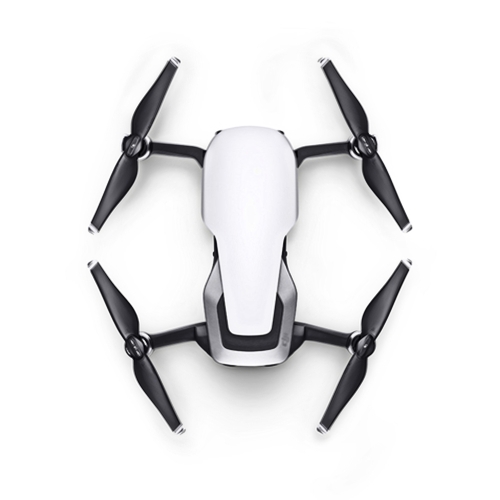Introduction: The Rise of Drone Cinematography
The use of drones in filmmaking has revolutionized the way we capture and present visual media. The ability to capture stunning aerial footage with ease and precision has opened up a new world of creative possibilities for filmmakers. Drone cinematography has become increasingly popular in recent years, with filmmakers using drones to capture breathtaking shots that were previously impossible to achieve. In this article, we will explore the advantages of using drones for filmmaking, the unprecedented aerial footage that can be captured, the creative possibilities that drones offer, and the future of film with drones and virtual reality.
Advantages of Using Drones for Filmmaking
One of the primary advantages of using drones for filmmaking is the ability to capture shots that were previously impossible or extremely difficult to achieve. Drones can fly at great heights and low angles, providing a unique perspective that is not possible with traditional camera equipment. This allows filmmakers to capture stunning aerial footage of landscapes, cities, and other environments that would be impossible to capture otherwise.
Another advantage of using drones for filmmaking is the flexibility they offer. Drones can be maneuvered in any direction, allowing filmmakers to capture shots from any angle. This flexibility allows filmmakers to experiment with different shots and angles, resulting in more creative and dynamic footage.
Drones are also more cost-effective than traditional camera equipment. They are smaller, lighter, and easier to transport, making them ideal for shooting in remote or hard-to-reach locations. This eliminates the need for expensive equipment and personnel, reducing the overall cost of production.
Capturing Unprecedented Aerial Footage
One of the most significant advantages of using drones for filmmaking is the ability to capture unprecedented aerial footage. Drones can fly at great heights and low angles, providing a unique perspective that is not possible with traditional camera equipment. This allows filmmakers to capture stunning aerial footage of landscapes, cities, and other environments that would be impossible to capture otherwise.
Drones can also be used to capture dynamic shots of moving objects, such as cars, boats, and people. This allows filmmakers to create more engaging and exciting footage, resulting in a more immersive viewing experience for the audience.
Pushing the Boundaries of Cinematic Creativity
Drones have opened up a new world of creative possibilities for filmmakers. They offer a unique perspective that allows filmmakers to experiment with different shots and angles, resulting in more creative and dynamic footage. Drones can be used to capture shots that were previously impossible or extremely difficult to achieve, allowing filmmakers to push the boundaries of cinematic creativity.
Drones can also be used to create stunning visual effects, such as tracking shots and aerial panoramas. This allows filmmakers to create more immersive and engaging content, resulting in a more memorable viewing experience for the audience.
Cost-Effective Filmmaking with Drones
Drones are more cost-effective than traditional camera equipment. They are smaller, lighter, and easier to transport, making them ideal for shooting in remote or hard-to-reach locations. This eliminates the need for expensive equipment and personnel, reducing the overall cost of production.
Drones also require less time to set up and operate than traditional camera equipment. This allows filmmakers to shoot more footage in less time, resulting in a more efficient production process.
The Future of Film: Drones and Virtual Reality
The future of film is closely tied to the development of new technologies, such as drones and virtual reality. Drones have already revolutionized the way we capture and present visual media, and their role in filmmaking is only set to grow in the future.
Virtual reality is another technology that is set to shape the future of film. Virtual reality allows viewers to experience films in a more immersive and interactive way, blurring the line between the viewer and the film. Drones can be used to capture footage for virtual reality films, providing a unique perspective that is not possible with traditional camera equipment.
Overcoming Challenges in Drone Cinematography
Drone cinematography is not without its challenges. One of the biggest challenges is the need for skilled drone pilots who can operate the equipment safely and effectively. This requires a high level of skill and training, as well as a thorough understanding of the regulations and safety guidelines governing drone use.
Another challenge is the need to obtain permits and permissions to fly drones in certain locations. Drones are subject to regulations and restrictions, and filmmakers must obtain the necessary permits and permissions before flying their drones in public spaces or near airports.
The Role of Drone Pilots in Film Production
The role of drone pilots in film production is crucial. Skilled drone pilots are essential for capturing high-quality footage safely and effectively. They must be trained to operate the equipment in a way that ensures the safety of everyone involved in the production.
Drone pilots must also be familiar with the regulations and safety guidelines governing drone use. They must obtain the necessary permits and permissions before flying their drones in public spaces or near airports.
Ethical Considerations in Drone Filmmaking
Drone filmmaking raises ethical considerations that must be taken into account. The use of drones for surveillance or other intrusive purposes can be seen as a violation of privacy. Filmmakers must ensure that they are not infringing on the rights of individuals or groups when using drones to capture footage.
Filmmakers must also consider the impact that their use of drones may have on the environment. Drones can be noisy and disruptive, and their use can disturb wildlife and natural habitats. Filmmakers must take steps to minimize the impact of their drone use on the environment.
Conclusion: Embracing the Possibilities of Drone Cinematography
Drone cinematography has revolutionized the way we capture and present visual media. Drones offer a unique perspective that allows filmmakers to experiment with different shots and angles, resulting in more creative and dynamic footage. Drones are also more cost-effective than traditional camera equipment, making them ideal for shooting in remote or hard-to-reach locations.
The future of film is closely tied to the development of new technologies, such as drones and virtual reality. Drones have already revolutionized the way we capture and present visual media, and their role in filmmaking is only set to grow in the future. As filmmakers continue to embrace the possibilities of drone cinematography, we can expect to see even more innovative and exciting films in the years to come.
Popular Hashtags
-
dronecinematography
-
filmmaking
-
aerialfootage
-
virtualreality
-
creativepossibilities
-
costeffective
-
futureoffilm
-
dronepilots
-
ethicalfilmmaking
-
embracingpossibilities









































